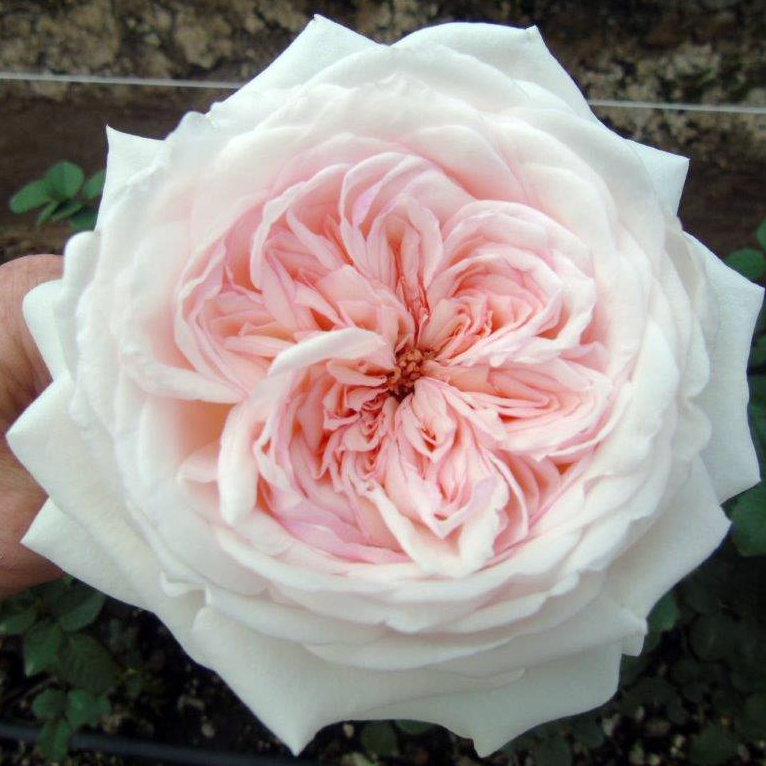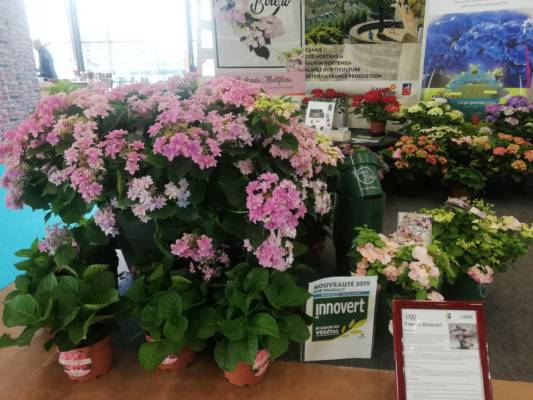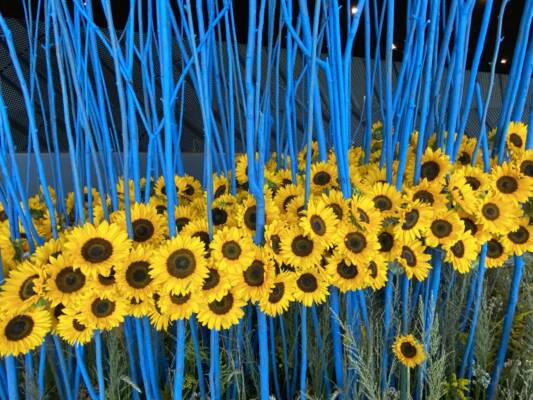HAARLEMMERMEER, Netherlands: How to adapt and thrive in an era of automation, sustainability, digitalisation, AI, shifting trade policy and rising labour costs in traditionally low-cost countries? What do we know about the decision-making process that customers go through before they purchase a bouquet of chrysanthemums or potted orchid? And what kind of marketing tactics can be used to keep flowers and plants top of mind?
These were the questions Floriforum, the annual conference of Union Fleurs (taking place in November 2019, one day prior to the opening of the IFTF show in Vijfhuizen), sought to answer by inviting keynote speakers such as Kate Penn, CEO of the Society of American Florists (SAF), Dennis van der Lubbe managing director of the Flower Council of Holland, Phil Burton of letterbox flower company Bloom & Wild and Martin de Munnik of neuromarketing research company Neurensics.
De Munnik has more than 30 years of experience with neuromarketing, the science that peers into a consumer’s brain. He measures brain activity in response to different product features, marketing campaigns, logos, advertisements, billboards, and explores what kind of stimulation is most likely to result in buying.
De Munnik explained to an audience consisting of floral wholesalers, breeders, researchers, growers, horticultural suppliers, marketeers and journalists, that the human brain weighs around 1.3 to 1.5 kg, is composed of 75% water and is the fattiest organ in the body. On average, humans have to make approximately 40,000 decisions per day and thanks to Nobel prize winner Daniel Kahneman we know that surrounding human decision making is an incredible lack of reasoning. Humans are for 95% of the time irrational with their brain unconsciously preparing almost all decisions.
De Munnik went on to say that the 50,000 fMRIs (functional Magnetic Resonance Imaging) his company has carried out for its clients have all served the same goal: to find out what consumers subconsciously feel as opposed to what marketers think they think.
fMRI, but also EEG (electroencephalograph) and eye-tracking technology are used to explore the complex interaction between the more primitive parts of the brain and their hunger for reward, and the rational goal-orientated prefrontal cortex and the nucleus accumbens – the brain structure that activates our motivation and allows willpower to translate into action.
What is the real attraction of flowers to customers?
So much for the theory. Now let’s narrow it down to the purchase behaviour for flowers and plants. De Munnik encouraged the sector to focus on the reward presented by ornamentals – higher levels of dopamine within the brain. As this neurotransmitter is associated with pleasure and positive feelings, it may increase repeat purchases. He mentioned Procter & Gamble, which, in its marketing campaigns, traditionally presents a problem, followed by the solution while highlighting a brand’s purpose. The Dutch bulb sector, De Munnik believes, is a prime example of how to successfully activate the consumer’s rewarding system twice; make your hands dirty now by planting bulbs and reap the rewards come spring.
What’s more, neuromarketing also boils down to evoking the right set of emotions. And…rather unsurprisingly, sex sells with De Munnik pointing to the car industry which continues to use female models in their marketing campaigns.
For the occasion, De Munnik provided the Flower Council of Holland, the marketing arm for the Dutch ornamentals sector, with some useful tips. DOs: billboards with ‘I love you flowers’, use campaigns starring romantic roses and passionate passifloras and promotional videos featuring multicultural marigolds and ethnic eustoma grandiflorum. DONTs: show an arguing couple who are throwing flowers into each other’s faces or, even worse, sympathy flowers and tears.
When delving into the consumer’s subconscious, the industry should take note of the workings of the consumer’s mirror neurons. In simple terms: humans tend to imitate behaviour they observe in others. When, for example, a minimalistic bouquet is in the shopping window, there is less chance that customers will leave the shop with armfuls of flowers.
De Munnik concluded by saying he feels sorry that for all the revolutionary brain imaging, the holy grail, the much-wanted buy button, remains undiscovered. As such, it is difficult to say to what extent neuromarketing influences consumer behaviour.
Unfortunately, De Munnik’s presentation didn’t spark an important debate – the ethics of brain imaging. However, it’s is pretty safe to say that brain tumour patients will look at neuromarketing from a very different, non-capitalistic perspective. Equally not addressed was the issue of consumer data and autonomy protection.
Scoring high in customer satisfaction
Speaking of data, letterbox flower company Bloom & Wild collects this ‘big’. “One-third of our staff (100 in total) are technologists,” explained Phil Burton, Chief Operating Officer of Bloom & Wild, “starting with raw data and organising it into digestible information.”
A Net Promoter Score (NPS) is the primary scoring method the company uses to measure the customer experience and gauge customer satisfaction. The technique is much more straightforward than its name suggests, relying on just one question: ‘How likely are you to recommend our brand to a colleague, family member or friend?’ With consumers increasingly suffering from advertisement bombardment and feedback fatigue with online surveys and the notoriously overstated purchase intent in survey responses in mind, it was interesting to hear that Bloom & Wild has a golden 40% response rate of email survey.
Founded in 2013 by Aron Gelbard and Ben Stanway, Bloom & Wild sells 1.9 million bouquets per year. By focusing on two key growth strategies, it has become the UK’s market leader in flower gifting, a prime position which is currently occupied by Interflora and is expanding its business abroad.
The UK is now right for 90% of the company’s sales while the company has also ventured into Ireland, France and Germany. “In Germany, the expansion trajectory is rather smooth sailing other than the fact that the country lacks English-style letterboxes. It, therefore, positions itself as a flower gifting brand known for its original flower boxes instead of letterbox flowers. The French market is much more challenging as consumers’ preferences highly differ from English and German preferences,” Burton noted.
He added that the company is a champion in the world of metrics, marketing and branding while in creating a chain there’s a world to win. “That’s why we work with a tried and tested partner to grow our network and logistics system.”
Private equity firm Piper has invested GBP 22 million into Bloom & Wild whose mission is to ‘send and receive a joy’. “Contrary to what we believed, customers enjoy the fun that comes with arranging the stems themselves and the surprise effect thanks to our ever-changing bouquets,” ensured Burton.
Traditional shopping in a digital-driven world?
As online flowers, the ornamentals sector cannot live online alone. That was the message of Kate Penn, who became the Society of American Florist (SAF)’s new CEO in 2018.
“The industry is very much alive, and there are plenty of business opportunities out there. This position bodes well for the industry at large, and this is thanks to the digital era where consumers also want to interact with sales staff physically. We can now see, for example, e-commerce giant Amazon moving into the physical world. Recently I heard someone saying that the faceless and impersonal online shopping has brought about a nostalgia for brick and mortar stores.”
Penn went on to say that US suburbs and smaller towns are becoming more diverse and one of the chief causes of this diversity is the spread of millennials, with their own specific needs, into the peripheral areas surrounding core cities. Especially where there is a rise in brick and mortar stores. Nonetheless, key for physical stores is distinctive and relevant to their customers
The organiser of the event is Brussels-based Union Fleurs, the representative organisation at the EU and international levels which lobbies to promote and protect the common interests of both its members and the general global trade of cut flowers, cut foliage and potted plants. The free flow of ornamentals between suppliers and consumer markets and fair, sustainable competitive conditions for floriculture trade around the world are traditionally high on the organisation’s agenda.






































